When it comes to power tools, there are a lot of different options to choose from. And when it comes to miter saws, there are two main types: sliding and non-sliding. But which one is the best for you?
In this article, we will discuss the differences between sliding and non-sliding miter saws, and help you decide which type is best for your needs.
What Is A Sliding Miter Saw?
A sliding miter saw is a specialized power tool that’s designed for making precise, clean cuts in wood and other materials. It’s often used by carpenters, cabinetmakers, and other woodworkers to create moldings, frames, trim, and other pieces.
How Does A Sliding Miter Saw Work?
A sliding miter saw works by holding the workpiece (usually a piece of wood) against a rotating blade. The blade is mounted on an arm that’s attached to a base, and the whole assembly sits on a table or stand.
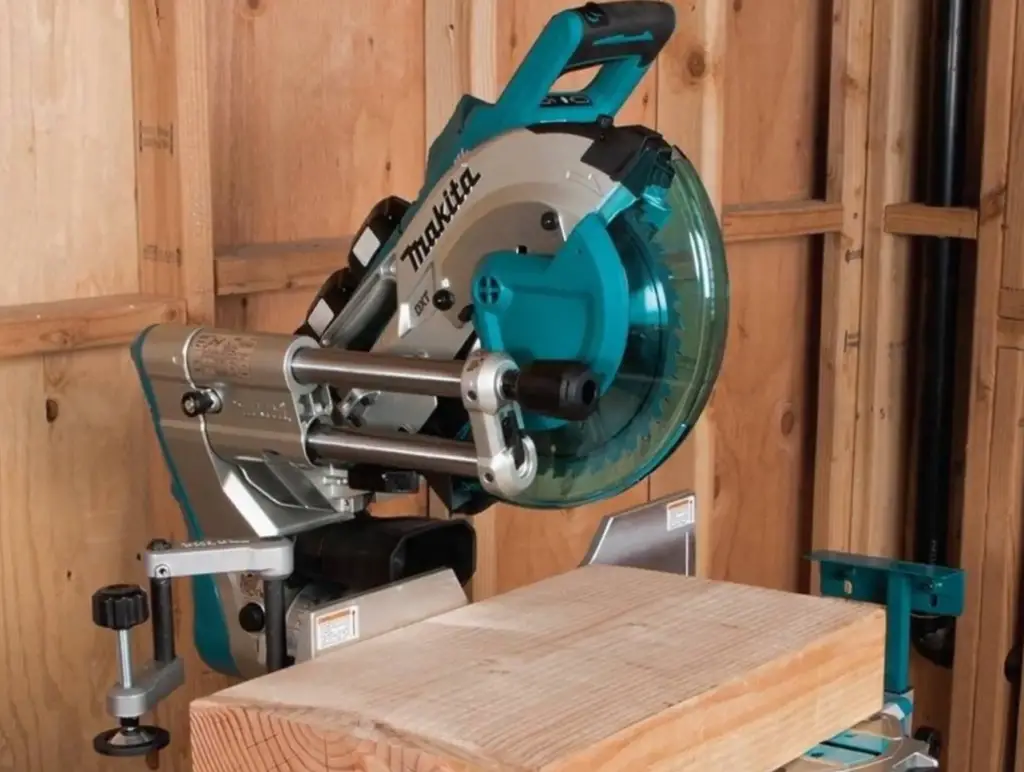
To make a cut, you first need to adjust the blade to the correct angle. Then, you push the arm down to lower the blade into the workpiece. As the blade cuts through the wood, it slides along the rail, making a precise, clean cut.
What Are The Benefits Of Using A Sliding Miter Saw?
There are several benefits of using a sliding miter saw over a standard miter saw including:
- Longer cuts: A sliding miter saw can make longer cuts than a standard miter saw because the blade slides along a rail. This means you can cut larger pieces of wood or make longer cuts without having to reposition the workpiece;
- Greater stability: The blade on a sliding miter saw is more stable than the blade on a standard miter saw because it’s attached to a rail. This makes it easier to make precise, clean cuts;
- More versatility: A sliding miter saw is more versatile than a standard miter saw because it can make both crosscuts and miter cuts. Miter cuts are cuts that are made at an angle, such as 45-degree cuts. Crosscuts are cuts that are made across the grain of the wood, such as 90-degree cuts [1];
Basic Functions Of A Sliding Miter Saw
Sliding miter saws are designed to make a variety of different cuts, including:
- Crosscuts, which are cuts made perpendicular to the grain of the wood;
- Miter cuts, which are angled cuts;
- Bevel cuts, which are angled cuts made at an angle other than 90 degrees;
Sliding miter saws usually have a blade that’s 10 inches or 12 inches in diameter, and they can cut through wood that’s up to 8 inches thick. Some models also have a laser guide that projects a line onto the workpiece, which makes it easier to make precise cuts.
Types of Cuts
Sliding miter saws are incredibly versatile and can be used to make a variety of different cuts, including:
- Crosscut;
- Miter cuts;
- Bevel cuts;
- Compound cuts;
Crosscuts are the most common type of cut that you’ll make with a sliding miter saw. To make a crosscut, you’ll need to set the blade at a 90-degree angle and then push the blade through the wood.
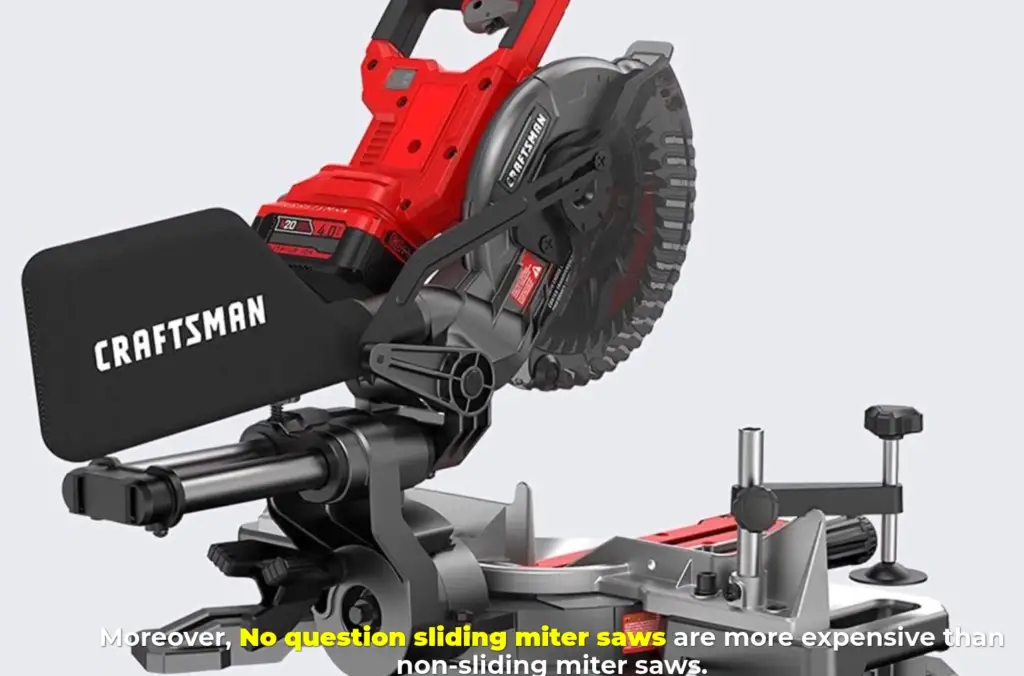
Miter cuts are angled cuts that are often used for trim work and moldings. To make a miter cut, you’ll need to adjust the blade to the desired angle and then make the cut.
Bevel cuts are similar to miter cuts, but they’re made at an angle other than 90 degrees. To make a bevel cut, you’ll need to adjust the blade to the desired angle and then make the cut.
Compound cuts are a combination of miter and bevel cuts. To make a compound cut, you’ll need to adjust the blade to the desired angle and then make the cut.
Price
The price of a sliding miter saw is going to be much higher than the price of a non-sliding miter saw. This is because the sliding feature is an added cost. If you are looking for a cheaper option, then you might want to consider getting a non-sliding miter saw.
What Would I Be Using A Sliding Miter Saw For?
Sliding miter saws are incredibly versatile tools that can be used for a wide range of tasks, both big and small.
Some of the most common uses for sliding miter saws include:
- Making cross cuts in larger pieces of lumber;
- Cutting crown molding and other decorative trim;
- Cutting baseboards and other trim for installation;
- Building decks, fences, and other outdoor structures;
Sliding miter saws can also be used for more precision-based tasks, such as cutting door frames, window frames, and other smaller pieces of lumber.
What Is A Non-Sliding Miter Saw?
A non-sliding miter saw is very similar to a sliding miter saw, with a few key differences. Non-sliding miter saws are typically smaller in size, which makes them more maneuverable and easier to transport. They’re also less expensive than their sliding counterparts.
However, the biggest difference between a non-sliding miter saw and a sliding miter saw is the size of the blade. Non-sliding miter saws have a smaller blade, which limits the size of the material that can be cut.
Non-sliding miter saws are best suited for smaller projects, such as cutting trim or molding. They can also be used for larger projects, but the smaller blade will make it more difficult to make precise cuts.
Basic Functions
Miter saws are designed to make accurate crosscuts and angle cuts in various materials.
A miter saw has a blade mounted on a pivoting arm that swings to the left or right, making it possible to produce angled cuts; most models also have a tilting mechanism that allows the blade to be tilted relative to the base plate, allowing beveled cuts to be made. [2]
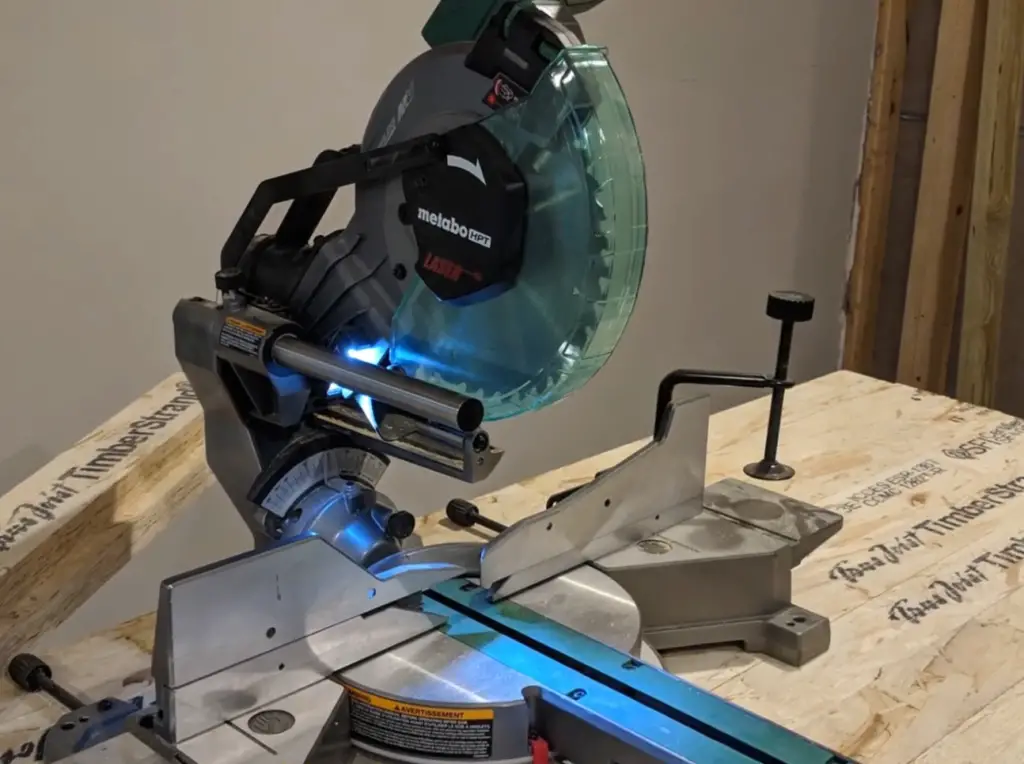
Types of Cuts
All miter saws are designed to make precise, cross-cutting cuts. A crosscut is a cut made perpendicular to the wood grain. This type of cut is often used when trimming molding or cutting studs to length during framing.
Miter saws are also great for making compound cuts. A compound cut is a cut made at an angle to the wood grain. Compound cuts are often used when installing crown molding or baseboards.
There are two types of compound cuts:
- Compound miter cuts: The blade is tilted to the left or right to make a bevel cut while the saw is pivoted to the left or right to make a miter cut;
- Compound bevel cuts: The blade is tilted to the left or right to make a bevel cut while the saw is pivoted in the opposite direction;
The type of miter saw you need will depend on the types of cuts you plan on making. If you only plan on making crosscuts, a basic miter saw will suffice. If you plan on making compound cuts, you’ll need a compound miter saw.
Blade
Miter saws come with blades ranging in size from 7-1/2 inches to 12 inches. The size of the blade will determine the maximum width of cut you can make.
The most common blade size is 10 inches. A 10-inch blade can crosscut boards up to 6 inches wide. If you plan on cutting wider boards or making a lot of compound cuts, you’ll need a saw with a larger blade.
Non-Sliding Miter Safety Features
Most miter saws have a blade guard that covers the blade when it’s not in use. The blade guard is designed to protect you from the spinning blade in case you accidentally hit the trigger.
Some miter saws also have a safety switch that must be engaged before the saw will operate. This switch is usually located on the handle or trigger. The safety switch is an important feature that prevents the saw from being turned on accidentally.
Another safety feature found on some miter saws is a blade brake. A blade brake stops the blade from spinning after you release the trigger. This feature is designed to protect you in case you accidentally hit the trigger while the blade is spinning.
What Would I Be Using A Non-Sliding Miter Saw For?
Non-sliding miter saws are smaller and lighter than sliding miter saws, so they’re easier to carry and maneuver. They’re also less expensive than sliding miter saws.
Non-sliding miter saws are limited to making crosscuts, so they’re not a good choice if you plan on making compound cuts.
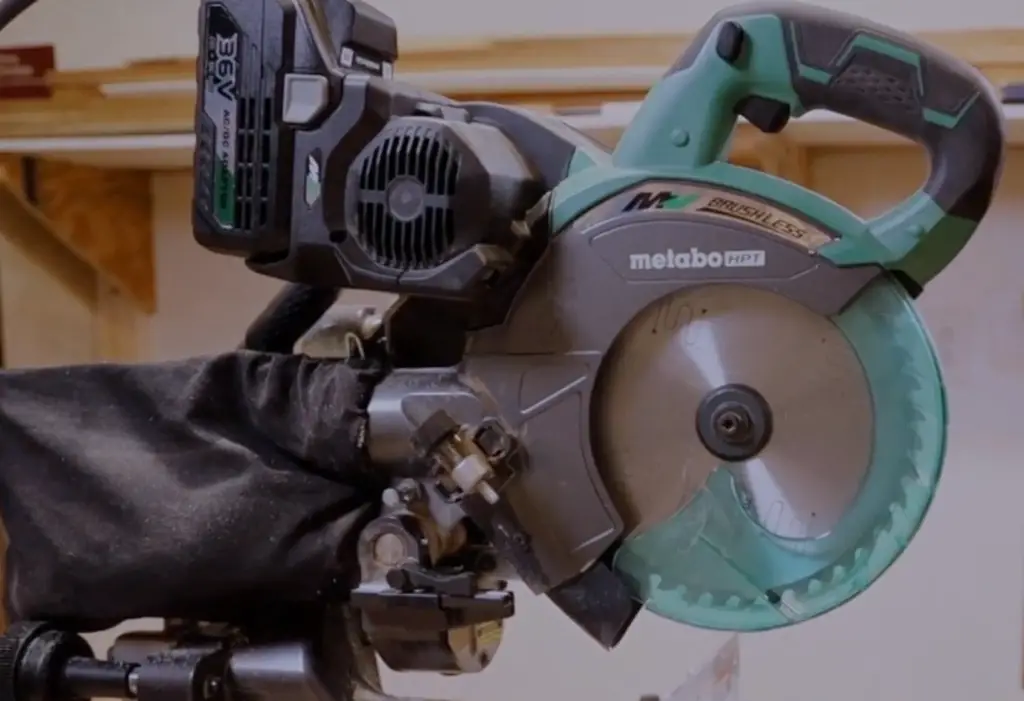
How Do I Decide Which Is Best For Me?
The type of miter saw you need will depend on the types of cuts you plan on making. If you only plan on making crosscuts, a basic miter saw will suffice. If you plan on making compound cuts, you’ll need a compound miter saw.
The size of the blade will also be a factor in your decision. The most common blade size is 10 inches. A 10-inch blade can crosscut boards up to 6 inches wide. If you plan on cutting wider boards or making a lot of compound cuts, you’ll need a saw with a larger blade.
Finally, consider your budget and the features that are important to you. Miter saws range in price from around 0 to 0. Sliding miter saws are more expensive than non-sliding miter saws, but they offer more capabilities.
If you can’t decide between a sliding and non-sliding miter saw, consider getting a sliding miter saw. It will give you the most options and flexibility.
FAQ
What is the difference between a sliding and non-sliding miter saw?
The main difference between a sliding and non-sliding miter saw is that a sliding miter saw can make longer cuts than a non-sliding miter saw. This is because the blade on a sliding miter saw can slide back and forth, allowing you to make longer cuts without having to reposition the material you’re cutting.
Another difference between these two types of miter saws is that a sliding miter saw is typically more expensive than a non-sliding miter saw. This is because a sliding miter saw is a more advanced tool that can make longer and more complex cuts.
If you’re looking for a miter saw to make simple cuts, then a non-sliding miter saw will likely be sufficient. However, if you’re looking for a miter saw to make more complex or longer cuts, then a sliding miter saw would be a better option.
What is the main advantage of a sliding compound miter saw?
A bevel cut is a type of cut that is made at an angle to the face of the wood, and a compound cut is a combination of a miter cut and a bevel cut. This makes a sliding compound miter saw more versatile than a standard miter saw.
What is the difference between a chop saw and a sliding miter saw?
Chop saws and sliding miter saws are both types of power saws that can be used to make quick, clean cuts in wood or other materials. However, there are some key differences between these two types of saws that you should be aware of before making a purchase.
Sliding miter saws, on the other hand, have a blade that can be moved forwards and backward on a track. This allows you to make a variety of different cuts, including angled cuts. Sliding miter saws are also typically larger and heavier than chop saws, and they often come with additional features, such as laser guides and dust collectors.
What are the 3 types of miter saws?
The three types of miter saws are the standard miter saw, the compound miter saw, and the sliding compound miter saw. Standard miter saws are the most basic and can only make angle cuts.
Compound miter saws can both make angle cuts and bevel cuts. Sliding compound miter saws can make all of those cuts and more, plus they have a sliding feature that allows them to make much longer cuts.
What is the difference between a standard miter saw and a compound miter saw?
The main difference between a standard miter saw and a compound miter saw is that a compound miter saw can also make bevel cuts, while a standard miter saw cannot.
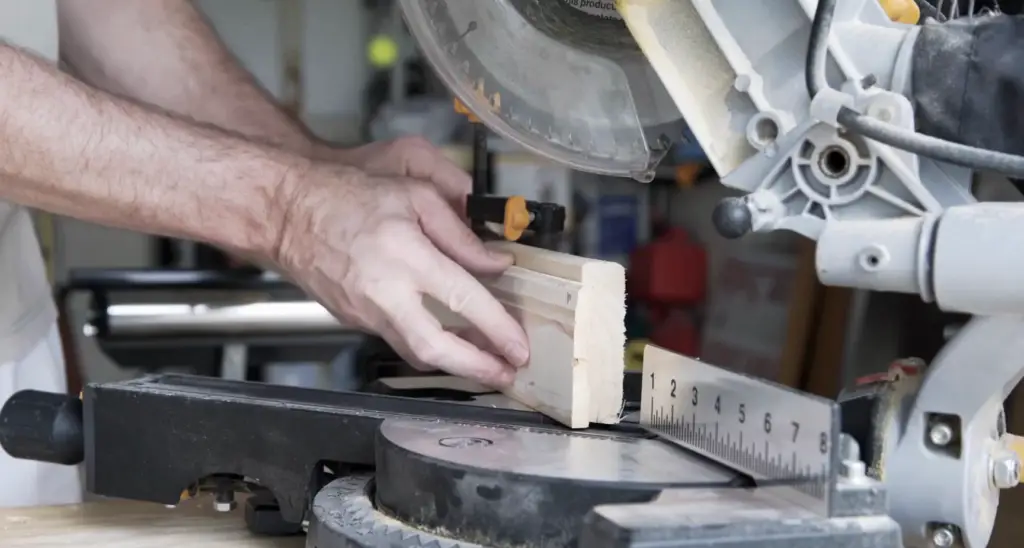
What is the difference between a compound miter saw and a sliding compound miter saw?
The biggest difference between a compound miter saw and a sliding compound miter saw is that a sliding compound miter saw can make much longer cuts than a regular compound miter saw.
This is because the blade of a sliding compound miter saw can slide back and forth on a rail, giving it a lot more cutting capacity. Sliding compound miter saws also tend to be more expensive than regular compound miter saws.
What are the benefits of using a miter saw?
Miter saws are great for making precise cuts, and they can be used for a variety of different projects. Some of the things you can use a miter saw for include trimming wood, cutting molding, and even making picture frames.
What are the drawbacks of using a miter saw?
Miter saws can be dangerous if they are not used properly. Always be sure to use the proper safety equipment and follow all safety precautions when using a miter saw.
How do I choose the right miter saw for my project?
The type of miter saw you need will depend on the project you are working on. If you only need to make basic cuts, then a standard miter saw will suffice.
However, if you need to make bevel cuts or long cuts, then you will need a compound or sliding compound miter saw.
Are there any safety concerns I should be aware of when using a miter saw?
Yes. Miter saws can be very dangerous if not used properly. Always wear eye protection and gloves, and be sure to follow all safety precautions that come with your saw.
Useful Video: Sliding vs Non Sliding Miter Saw
Conclusion
In the end, deciding between a sliding or non-sliding miter saw really depends on what you will be using it for. If you are looking for a saw that can cross-cut boards at different angles, then a sliding miter saw is your best bet.
However, if you don’t need those capabilities and want to save some money, go with the non-sliding model. Whichever type of saw you choose, make sure to read the reviews before purchasing to get an idea of what others have thought about it.
With either option, you can’t go wrong as long as you use it correctly and take care of it!
References:
- https://www.thetoolsquare.com/sliding-vs-non-sliding-miter-saw/
- https://housegrail.com/sliding-vs-non-sliding-miter-saw/






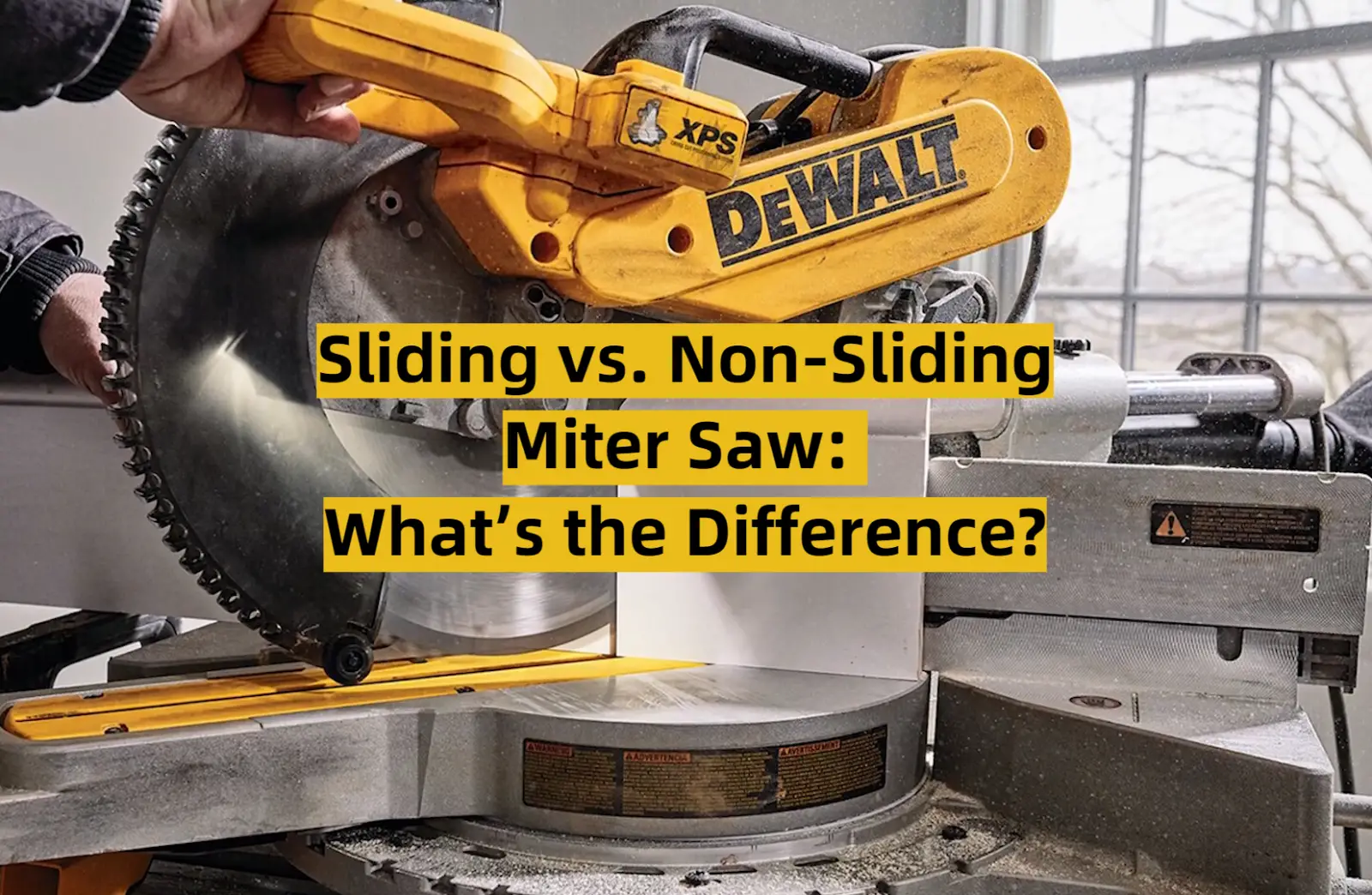






Leave a Reply